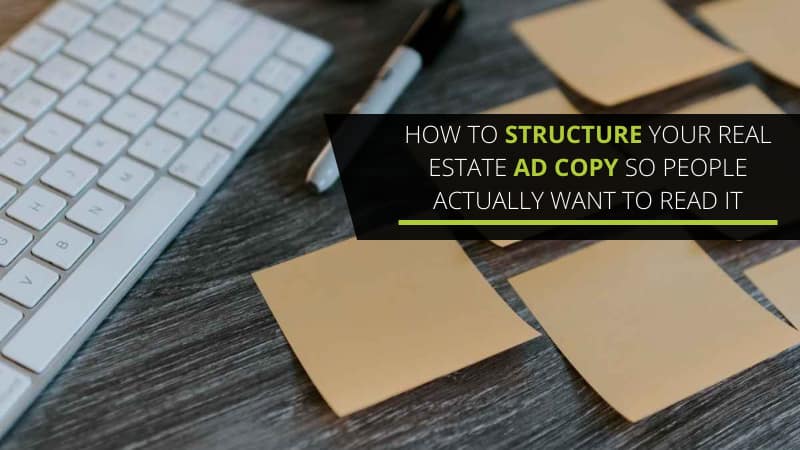First impressions can make or break the sale of a property.
And while the real estate photos are the first impression, the copy headline is next. When done right, your headline will grab the attention of potential buyers, and spark desire.
Newspapers, particularly tabloids, do headings well; this is the key to sales volumes.
If you want to improve your copywriting, here are some tips for writing attention-grabbing real estate headlines.
1. Write Headlines Directly to a Target Buyer
A familiar marketing maxim is: if you’re trying to sell to everyone, you end up selling to no one.
It can be hard to narrow down your market when you don’t want to exclude any potential buyers.
But every property has a market it will appeal to and a market it won’t. For instance, a family of five will not want a one-bedroom apartment.
So the first step to writing catchy real estate headlines is to define your target audience by asking who should care and why they should care about the property you’re selling.
Is it a first home buyer? Investor? Young family? Retirees?
Not only will your headlines be better when you speak directly to a potential buyer, but they will also be easier to write.
Here’s an example. Which headline speaks directly to first home buyers?
Stylish and Affordable Entry to Market v A Residence of Style and Sophistication
Both headlines might be accurate (your headline needs to be true), but the word choice differentiates the target market.
The following four headlines could potentially describe the same property but target a different buyer:
- Easy Care Appeal, Effortless Living (retirees)
- Fenced Yard, Walk to Schools and Parks (young families)
- Flat Block – R2 Zoning (developers)
- Vibrant Urban Living Close to Restaurants and Transport (professionals)
While it seems counterintuitive, targeting a particular audience doesn’t exclude those buyers who might not fit your target profile. After all, there’s no reason a retiree won’t want a vibrant urban lifestyle or a professional won’t want a yard for their dog.
That doesn’t mean you go back to targeting everyone, but you don’t have to worry about excluding potential buyers.
2. Highlight a Benefit
If you’ve defined a target audience, you know who should care about your property; the next question to answer is why they should care.
Every reader will be asking: what’s in it for me?
Your job is to answer that question with a benefit.
While features explain your property, benefits persuade someone to care about the property enough to book an inspection.
Here are some examples:
A covered alfresco is a feature. Having the family over for Christmas lunch is a benefit.
Have the Family Fun at Your Place this Christmas
Living near a school is a feature. Avoiding the school-run traffic jam is a benefit.
Family Convenience, Safe Five Minutes Walk to School
An onsite gym is a feature. Building muscle without wasting time travelling to a gym is the benefit.
Modern Apartment, Exclusive Resident’s Gym
3. Evoke an Emotional Response
Every property fills a desire, specifically the desires of your target buyer.
What desires does your property fulfil? Here are some ideas:
- Comfort
- Security
- Privacy
- Convenience, to save time and hassle
- To make money
- To stand out, status, prestige
- To fit in, social acceptance, to belong
Depending on the target buyer(s) and the property’s unique features and benefits, the property will serve one or two of these primary desires.
If you can, focus on one or more of these desires in your headline.
Pro tip: Use a free headline analysing tool to improve the quality of your headlines.
4. Be Feature Specific and Honest, Avoid ‘Clever’ and Cliche
‘Location, Location, Location!’
Unless you’re looking for an eye roll and a groan, you’ll want to steer clear of overused cliches in your headings, like the one above.
Stand out from the crowd with well-written headlines that capture attention and deliver on the promise.
Today, in the age of social media, headings are used as ‘clickbait’, but how often do you click on something and find the headline misleading?
While clickbait headlines capture attention, you’ll soon lose credibility if it’s not truthful or you’re not backing your claims up in the copy.
Instead, look to the 4 Us of copywriting:
- Unique – what makes this property stand out?
- Useful – what is the benefit you’re offering the target buyer?
- Ultra-specific – choose exact details over vague details (e.g. 5-minute walk, 60m2 living space)
- Urgent – If you can, infuse some FOMO (fear of missing out) into your headline or copy
5. Optimise the Length for Different Mediums
How long should your headline be?
The short answer is: as short as needed to convey your message.
The more accurate answer is that different platforms have their own character limits, so you may need to write a headline for each platform.
Your agency website may have specific character limits you need to know and stick to.
Other headline character limits to keep in mind include:
- Realestate.com.au – 150 characters
- Facebook Ads – 40 characters
- Instagram Captions – Total limit 2,200 but truncated to 125 characters in view
- Google ads – up to 90 characters
6. Attention-Grabbing Headline Tips
While all writing rules are meant to be broken, here are some guidelines to help you write headlines.
Less is more. Short and punchy headlines are easier to read than long headlines and, therefore, can be more attention-grabbing.
Alliteration can work well if it fits: But steer clear of overused cliches.
Use title case when writing headlines. Title case is where every first letter in the sentence is capitalised, except for articles (a, the), conjunctions (and, but, for), and short prepositions (at, by, from, with).
Avoid all caps. Most people these days understand all capital letters as SHOUTING. Unless you’re making a specific style choice (you’re shouting on purpose), stick to title case.
Don’t Overdo Exclamation Marks. Exclamation marks can make you sound like a hyped-up used car salesman. They suggest exaggeration and can look amateurish, which lowers your credibility.
An exclamation mark is effective if you’re drawing attention to an unexpected twist. Otherwise, let your words carry your meaning, not an exclamation mark.
And if you do decide to use an exclamation mark, just one will do.
Use the right feature photo to complement your headline. If your headline is about the fantastic entertaining deck, that’s the feature photo you want to use to emphasise your headline and show as ‘proof’ that the headline is true. Building that trust will make the potential buyer want to click through and continue reading.
Master copywriters like David Ogilvy spend as much time writing headlines as they do the rest of the copy because they know a good headline determines the effectiveness of the entire copy.
But you don’t need to reinvent the wheel – the headline-writing tips above come from decades of copywriting industry experts and will help you craft attention-grabbing real estate headlines.
It still takes time to write your copy. If you want to save time getting your listing out, it pays in dividends to hire a professional copywriter, like the team here at Professional Property copy. Call or email us to find out how we can help you, or visit our real estate copywriting page for more information.




